
For many years now, we have sourced our specialist fleece from Freda Magill, an expert, rare-breed sheep farmer, local to us in the Mourne Mountains.
We love using Freda’s fleece to hand weave our wall hangings and rugs. The variety of tones and textures is stunning and never ceases to fascinate us.
I recently managed to catch up with Freda and it was wonderful to hear her speak so passionately. We discussed everything from, differing sheep personality traits, to the preservation of traditional wool-related skills, such as spinning, weaving, knitting and felting.
As Freda explained, behind every piece of wool there is a story.
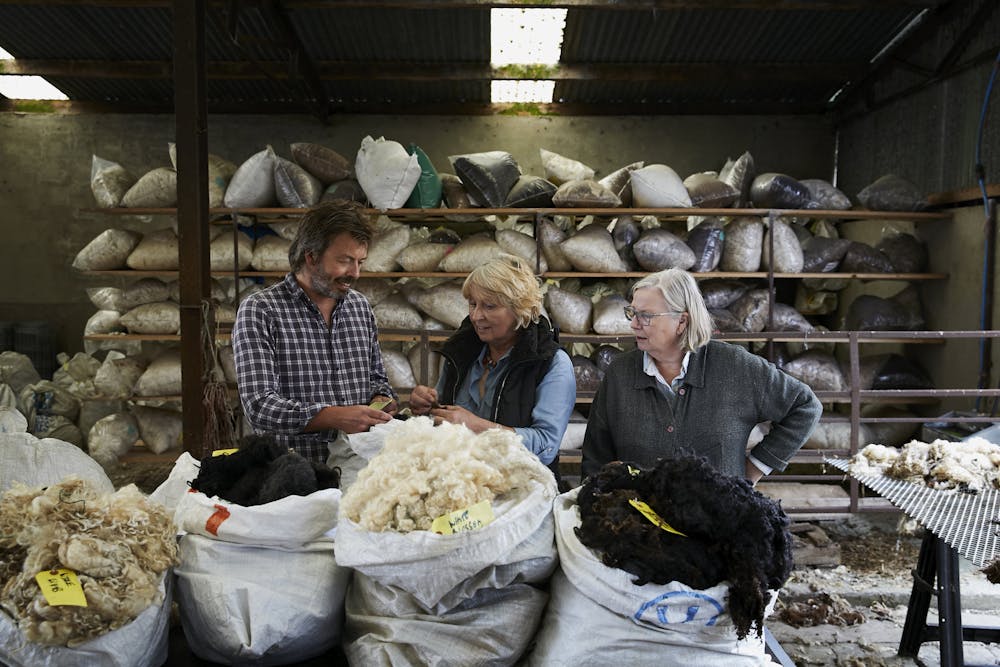
Mario: Thank you for joining us Freda, I’m hoping to get some insights into rare and native breeds of sheep...
Freda: Well, the one thing I enjoy, more than anything, is talking to someone who likes sheep and wool!
Mario: You are there from beginning, before the wool is spun into a yarn. You raise the animals that the fibre comes from before it filters down the production line. How did your fascination with sheep begin?
Freda: It all started when I was very young, about three or four. I was wandering by myself through a field one day on the family farm. A ewe was lying down. I thought, 'I'll lie down beside her'. I did and she started to lamb. Between us we delivered two lambs.
I went home, told everyone about it, and nobody believed me. I've had a passion for sheep ever since.
The secret is to observe them quietly: sit and watch. It's very easy to get into their way of thinking. The two of you then become a team, as opposed to just taking them from A to B. Handling sheep, understanding their behaviour, is basically a mind game. It's fascinating.
I enjoy the ambience of being with them. Different breeds are very exciting. The short-tailed primitive - such as Soay, Hebridean, Balwen, Manx Loaghtan - has a different genetic make-up to longer-tailed sheep, which means that you have to be careful not to give them too much copper in their diet because it's quite toxic.
You have to get your head around all these small things, so you can manage them properly and successfully.
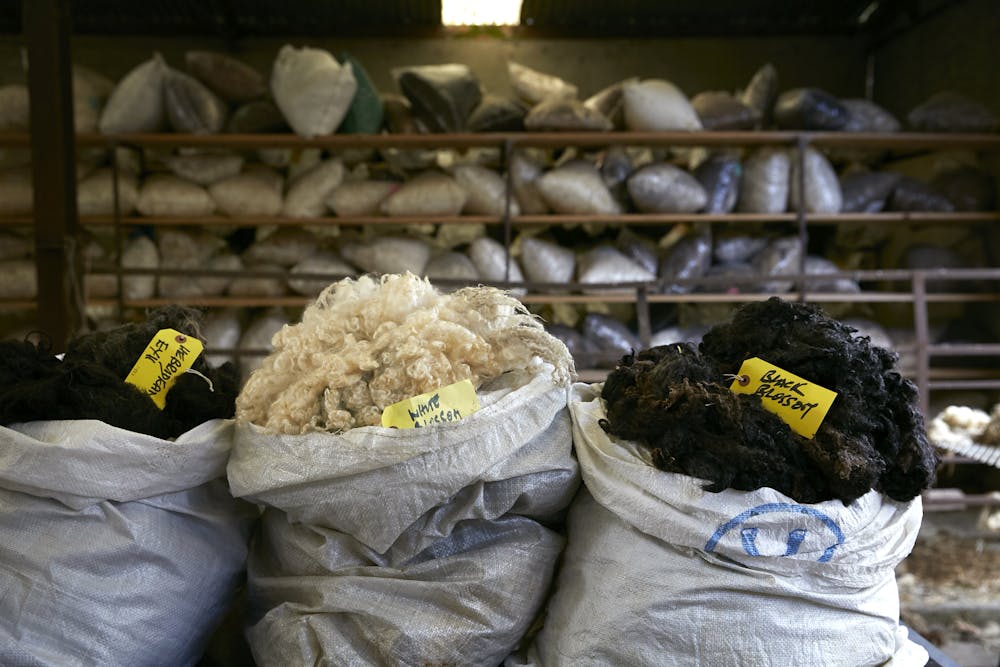
Mario: How did you start in the wool business?
Freda: I got my own flock in the early 1980's. I had Wensleydale sheep and thought their fleece was superb. I thought we would try to enhance its value.
Now I have about 56 different types of fleece when fully stocked. You name the breed, I probably have examples of it. Some of my customers are in Russia and the United States, eastern Europe and Canada. They buy 100's of kg at a time. They source the wool, divide it up into bits, hold craft fairs, workshops. Some of them even have television programmes.
Mario: Have you kept generations of the same sheep?
Freda: I can trace some of my sheep back to the early 1990's. A few of them are dispersed around the island of Ireland. You have to change rams every so often, but I can look at an 8 year old female and tell who her father was by her appearance. I select certain traits when breeding. If you reinforce them generation after generation, you end up with your own stamp on the flock. I've always primarily selected for fleece quality.
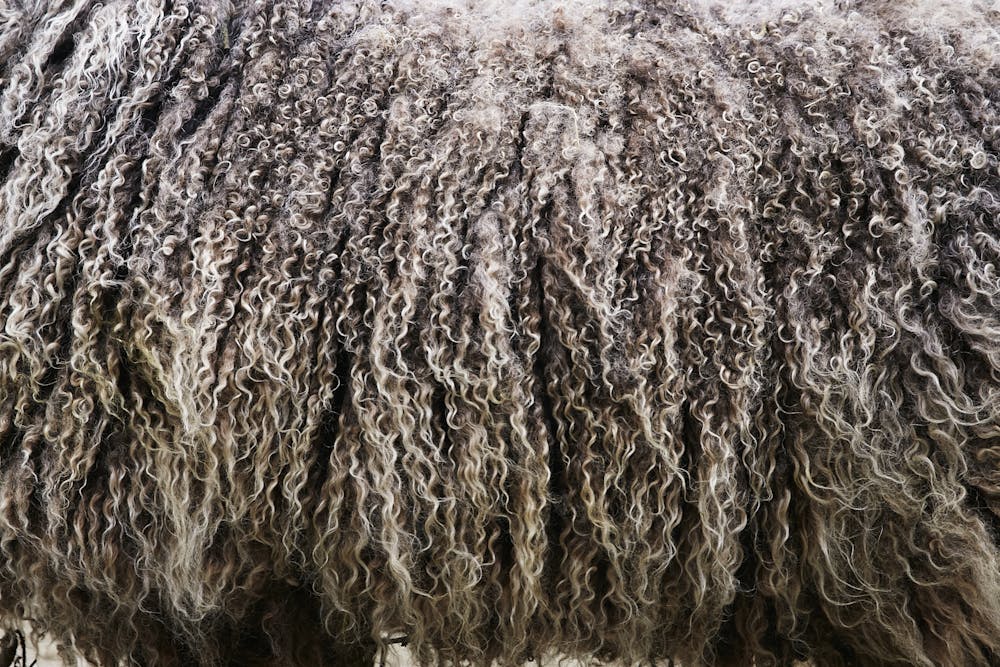
Mario: Do sheep have many different genetic make-ups?
Freda: The short-tailed primitives tend to be Scottish Island breeds. Some of them have Icelandic and Norwegian ancestry. They probably came with the Vikings.
The Shetlands have different genetics to the Soays because of their isolation and in-breeding. They've developed their own different traits. The North Ronaldsay breed, from Orkney island, is famous because it grazes on seaweed on the shore, and as a result the meat contains a lot more iodine and beneficial minerals.
Mario: What about Irish breeds?
Freda: There are very few native breeds in Ireland. Probably only one - Galway - and it can be dated back to the 1800's when some of the large estate owners decided to develop a breed for the west of Ireland. They used a variety of sheep breeds in its development. It has a lovely long fleece, but it's sorely neglected in Ireland. Hopefully it revives. The Roscommon is considered more of a type than a breed.

Mario: Do different breeds have different personalities?
Freda: Very much so. I once had a few Cheviot sheep but had to sell them. They were lovely but would get the other sheep agitated. I didn't like their temperament. Wensleydales have a lovely temperament. They're big and confident, perhaps because of their size.
The Wensleydale is about the height of a Shetland pony. Their field of vision is high off the ground, whereas the Texel is lower. The Texel can see the gaps at the bottom of the hedge and go through them. The Wensleydale doesn't see those gaps.
Hebrideans are not particularly interested in people. They keep to themselves. I have a hybrid as well, the Blossoms, which have curly black wool. They are placid, easy to work with, and have the most gorgeous fleece. As they get older, they get lighter and more silvery.
Mario: The first time I visited The Wool Initiative, I saw shelves full of fleeces of different textures and strands. I was surprised to see so many colours.
Freda: Some of that may be Herdwick. It's not a great fleece in some ways, but crossed with the Dorset, it has a lot of colour variation. Some rare breeds are fantastic for coloured fleece. The Shetlands have up to about 40 different markings and colour classifications. It's great for craft-workers. You can find breeders for particular shades.
Castlemilk Moorit Sheep are the colour of a ginger biscuit. Soay are a muted fawn shade.
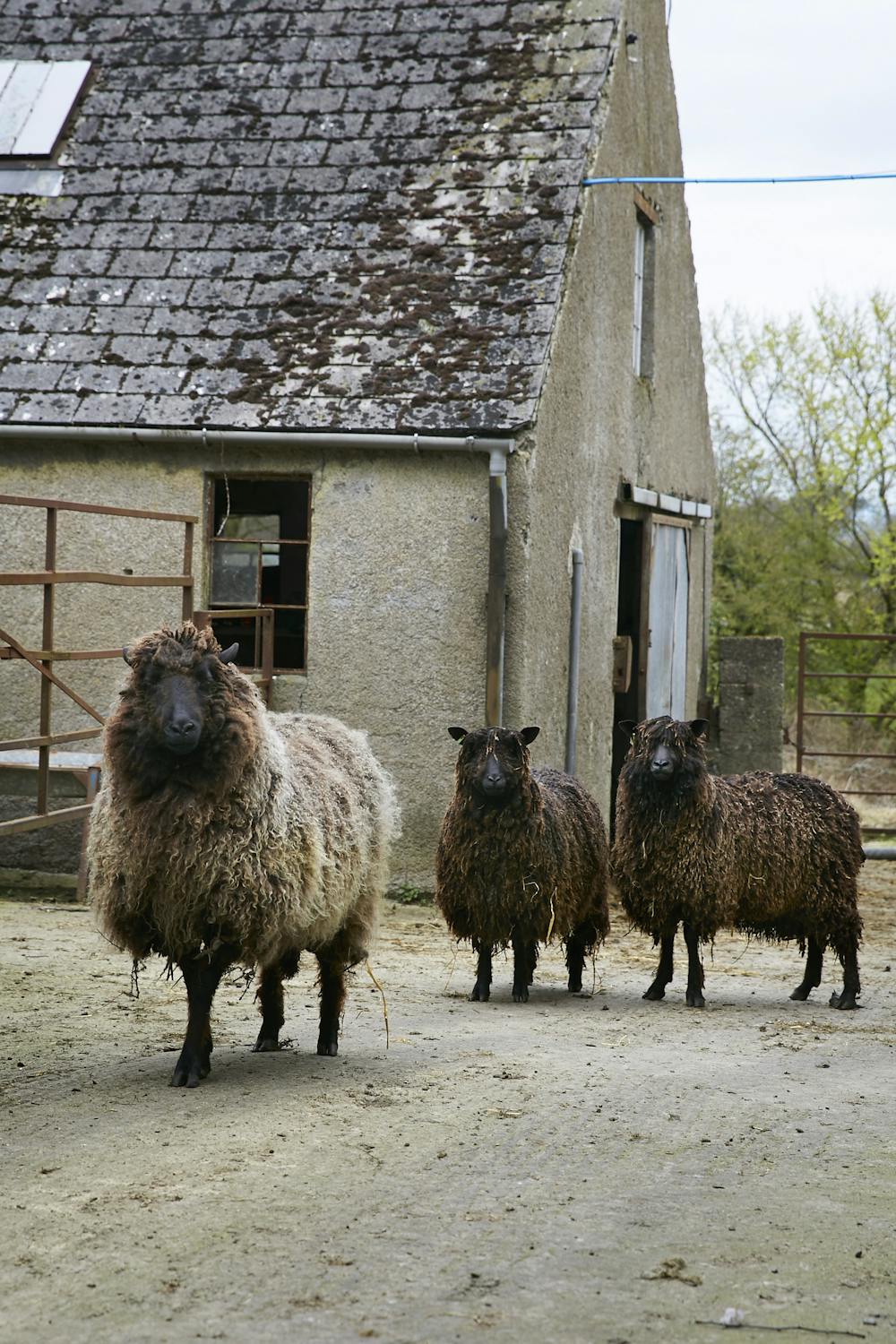
Mario: We use Herdwick in our wall coverings
Freda: A textile artist in Dublin got a commission to do a large mural for an industrial unit and requested five kilos of wool that would look like "Dublin at night time". I used some Herdwick and sent a sample to her. The black, grey, and white textures, over-dyed with dark blue, created the most beautiful effect.
Mario: We've tried that with some yarns. An over-dye adds depth in the colour. It works beautifully. Collecting the fleece must be a challenge.
Freda: I have a good book of contacts for people who keep rare breed and unusual sheep. I know where to get Castlemilk Moorit, Dorset Horn, or Dalesbred, for example.
Mario: Do hand spinners appreciate any particular breeds?
Freda: They like Wensleydale, Kerry Hill, Whitefaced Woodland, Dorset. They're not so keen on continental sheep, because they don't appear to have been bred with any consideration for the fleece quality.
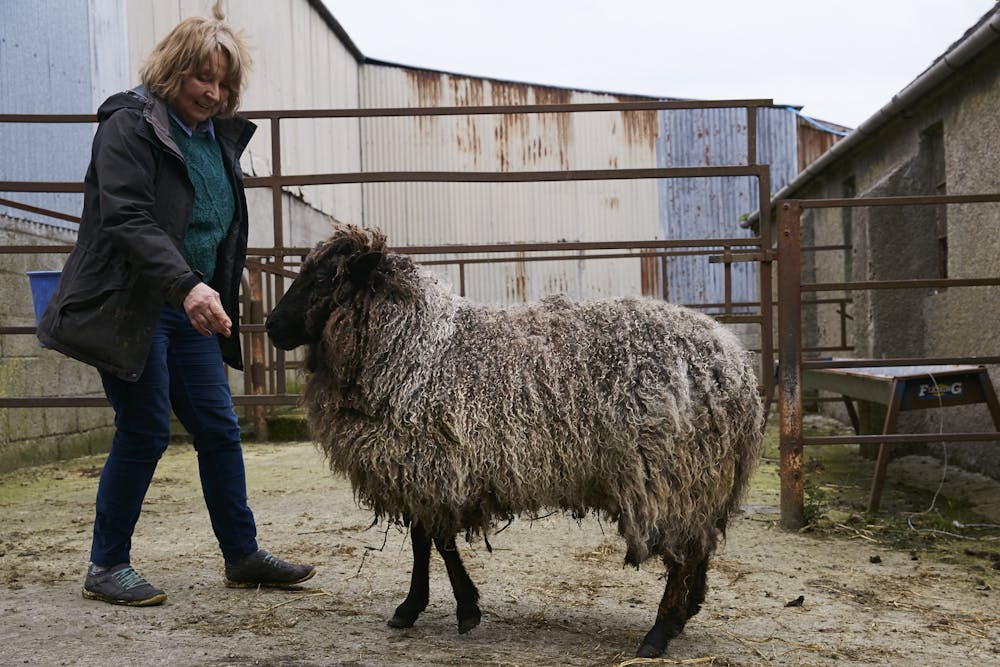
Mario: What goes into an award-winning fleece?
Freda: Visual appeal is not enough. If you're going to judge it properly, you should spread it out and see if the staple-length is consistent and even throughout the whole fleece. Sometimes if a ewe has twins, and she is sitting down chewing at her cud, the lambs will want to suck, so they come up on her back and scrape off the wool. You might get a bit of re-growth, but that that fleece will not be as good.
Other considerations? Is it the correct fleece for a Cheviot or a Blackface? Is the Herdwick fleece kempy? It should be. If it's not, maybe it's not a pure Herdwick. Is the quality of the fibre brittle or in good shape? You shouldn't have too much natural discolouration.
Contamination is the worst of all: little bits of thorn hedge or dung stuck to the fleece. Some people shear their sheep in a hayshed where grass seeds get into the fleece, which ruins it.

Mario: Do people use your wool in different ways?
Freda: They do. And they are from all over the world. A former member of [rock band] The Boomtown Rats runs an animal agency for film work. He phoned one day to see if I could supply him with a Mouflon, a Caspian wild sheep, for a film. I speak to people with all sorts of different requirements and interests.
Mario: Has a new generation come into the business?
Freda: No. It's quite sad. Some people at art college might source yarn, but they're not interest in sourcing from different sheep. Unfortunately, I know no one who is interested. It's such a shame because the need and desire for wool is growing.
Photography © Tara Fisher Photography